Big carp and catfish have been caught on very cheap but extremely effective sausage meat baits for decades. Homemade sausage meat baits and ground baits are enormously cheaper than many shop-bought baits and expensive popular luncheon meat and Pepperoni products. Let's see how to make yourself some big fish baits that really save you money and catch big fish!
Obviously sausage meat is great being so cheap and readily available without rapidly depleting marine resources as much as many other bait ingredients so such meat baits and ground baits are more ethical too! Sausage meat is best bought fresh or fresh frozen and is extremely economical like this. Sausage meat baits are not part of modern bait fashions at the moment and can really give you a great edge over many wary big fish!
Sausage meat is very simple and easy to use and you can either mince it up or use the minced product. The nutritional value of pork sausage meat is very stimulatory to both carp and catfish and has a fair proportion of those important fish stimulators; amino acids and oils. Pork sausage meat is often made with bread crumbs and it is very simple to make a bait by simply mixing it with eggs and very cheap wheat flour for example, although other more nutritional binding flours and meals are very numerous, to help bind bait into a dough.
Making one of the cheapest protein based homemade baits is simple, fast and very easy to do:
For example, using half a pound of minced sausage meat, mix it in a bowl with about 3 to 4 large hens eggs and around 2 table spoons of ordinary cheap wheat flour (or more if required) and kneed this into a stiff pliable dough. This can be used as fishing bait immediately as paste, or you can bag it up in bags with a tie to make the bag air tight and store in the fridge or freeze it for use next session. This bait is pretty much instant on most carp and catfish waters even though various meat brands and grades may very results and although very basic and simple will produce lots of fish.
Pre-baiting with a new bait is definitely a good edge putting things far more in your favour. (This is not totally necessary with this bait though.) I got a friend to do this for me in a swim (not such a clever move,) and I never got in the swim as incidental catches by other anglers meant it was too popular as a result of the baiting; so bait less obvious swims! Even just introducing a few pounds of bait in golf ball sized pieces the day before fishing can make a big difference!
When you pre-bait fish will obviously get a smell and taste of it without getting hooked so be more confident when you do try it on the hook, so do it! You can use sausage meat baits as part of your ground baiting or with other meat baits like chopped spam, meatballs, luncheon meats if you want the extra expense; sausage meat and cheap rolled oats is fine! Scald or boil or steam your baits if needed where smaller fish prove a bother, but add some paste to your bait on your rig or on the hook to boost more soluble attraction...
As most commercial rolled baits have uniform shapes, your homemade baits in odd shapes have the advantage over more wary fish by disrupting their reference points! Boilies are just made by placing your dough baits only a handful at a time in half a pan of boiling water in a pan for a couple of minutes; this makes a resilient skin when they dry-off on conveniently placed absorbent towels or trays etc. keep your water boiling at all times by not adding too many baits at once and keep taking baits out after around 2 minutes or so.
The proteins in the eggs in the boilies coagulate more with more boiling to make your baits harder, but you might add other substances to harden or toughen your baits; such as blood powder which also adds valuable stimulatory nutritional attraction. The choice of other additives, ingredients, flavours etc is vast, but choosing these is very much a science and art! Anything you add is better based on a little investigation of what truly triggers fish feeding and what has not already hammered your water, rather than a quick trip to the local bait shop first as this can end up costly and even counter-productive to your financial goals!
Really cheap homemade sausage baits might mirror Pepperoni products and you can add herbs and spices to improve attraction and stimulates fish digestion and general metabolism which is extremely valuable thing to do! You might simply add yeast powders, or Marmite or Vegemite to improve your stimulatory nutritional profile or use various matured cheeses which are rich in stimulatory salts and bacterially predigested proteins. Save money by adding a proportion of liquidised liver instead of more expensive liquid protein amino acids supplements for instance to boost nutritional stimulation.
The choice of ingredients, additives, flavours, taste enhancers etc not only bewildering for most anglers, but often expensive. It is a giant money-saving edge when you know what you are really adding for exactly what direct or indirect purpose in stimulating fish digestion, or to enhance responses at fish receptors and the brain to induce more intensive feeding for instance. Whatever you use, be it a bioactive flavour complex, or simple monosodium glutamate or anchovy source, often keeping things cheap will provide many hidden edges over anglers commercial baits which may already have peaked as it were...
The options are limited only by your imagination; but using proven fish feeding triggering substances and metabolically stimulating substances are among the best proven substances when you look at bait components... Homemade sausage meat baits (and ground baits) for big carp and catfish are well proven against any popular modern baits (even enzyme-active ones,) and I've proven this myself (although my baits are sometimes rather more complex than here.) So give them a try and you might decide to get much deeper into making your own homemade baits; but beware - they can become addictive!
By Tim Richardson.
Obviously sausage meat is great being so cheap and readily available without rapidly depleting marine resources as much as many other bait ingredients so such meat baits and ground baits are more ethical too! Sausage meat is best bought fresh or fresh frozen and is extremely economical like this. Sausage meat baits are not part of modern bait fashions at the moment and can really give you a great edge over many wary big fish!
Sausage meat is very simple and easy to use and you can either mince it up or use the minced product. The nutritional value of pork sausage meat is very stimulatory to both carp and catfish and has a fair proportion of those important fish stimulators; amino acids and oils. Pork sausage meat is often made with bread crumbs and it is very simple to make a bait by simply mixing it with eggs and very cheap wheat flour for example, although other more nutritional binding flours and meals are very numerous, to help bind bait into a dough.
Making one of the cheapest protein based homemade baits is simple, fast and very easy to do:
For example, using half a pound of minced sausage meat, mix it in a bowl with about 3 to 4 large hens eggs and around 2 table spoons of ordinary cheap wheat flour (or more if required) and kneed this into a stiff pliable dough. This can be used as fishing bait immediately as paste, or you can bag it up in bags with a tie to make the bag air tight and store in the fridge or freeze it for use next session. This bait is pretty much instant on most carp and catfish waters even though various meat brands and grades may very results and although very basic and simple will produce lots of fish.
Pre-baiting with a new bait is definitely a good edge putting things far more in your favour. (This is not totally necessary with this bait though.) I got a friend to do this for me in a swim (not such a clever move,) and I never got in the swim as incidental catches by other anglers meant it was too popular as a result of the baiting; so bait less obvious swims! Even just introducing a few pounds of bait in golf ball sized pieces the day before fishing can make a big difference!
When you pre-bait fish will obviously get a smell and taste of it without getting hooked so be more confident when you do try it on the hook, so do it! You can use sausage meat baits as part of your ground baiting or with other meat baits like chopped spam, meatballs, luncheon meats if you want the extra expense; sausage meat and cheap rolled oats is fine! Scald or boil or steam your baits if needed where smaller fish prove a bother, but add some paste to your bait on your rig or on the hook to boost more soluble attraction...
As most commercial rolled baits have uniform shapes, your homemade baits in odd shapes have the advantage over more wary fish by disrupting their reference points! Boilies are just made by placing your dough baits only a handful at a time in half a pan of boiling water in a pan for a couple of minutes; this makes a resilient skin when they dry-off on conveniently placed absorbent towels or trays etc. keep your water boiling at all times by not adding too many baits at once and keep taking baits out after around 2 minutes or so.
The proteins in the eggs in the boilies coagulate more with more boiling to make your baits harder, but you might add other substances to harden or toughen your baits; such as blood powder which also adds valuable stimulatory nutritional attraction. The choice of other additives, ingredients, flavours etc is vast, but choosing these is very much a science and art! Anything you add is better based on a little investigation of what truly triggers fish feeding and what has not already hammered your water, rather than a quick trip to the local bait shop first as this can end up costly and even counter-productive to your financial goals!
Really cheap homemade sausage baits might mirror Pepperoni products and you can add herbs and spices to improve attraction and stimulates fish digestion and general metabolism which is extremely valuable thing to do! You might simply add yeast powders, or Marmite or Vegemite to improve your stimulatory nutritional profile or use various matured cheeses which are rich in stimulatory salts and bacterially predigested proteins. Save money by adding a proportion of liquidised liver instead of more expensive liquid protein amino acids supplements for instance to boost nutritional stimulation.
The choice of ingredients, additives, flavours, taste enhancers etc not only bewildering for most anglers, but often expensive. It is a giant money-saving edge when you know what you are really adding for exactly what direct or indirect purpose in stimulating fish digestion, or to enhance responses at fish receptors and the brain to induce more intensive feeding for instance. Whatever you use, be it a bioactive flavour complex, or simple monosodium glutamate or anchovy source, often keeping things cheap will provide many hidden edges over anglers commercial baits which may already have peaked as it were...
The options are limited only by your imagination; but using proven fish feeding triggering substances and metabolically stimulating substances are among the best proven substances when you look at bait components... Homemade sausage meat baits (and ground baits) for big carp and catfish are well proven against any popular modern baits (even enzyme-active ones,) and I've proven this myself (although my baits are sometimes rather more complex than here.) So give them a try and you might decide to get much deeper into making your own homemade baits; but beware - they can become addictive!
By Tim Richardson.
About the Author:
Now improve your catches for life and get these: "BIG CARP BAIT SECRETS" And: "BIG CARP AND CATFISH BAIT SECRETS" And "FLAVORS And FEEDING TRIGGERS SECRETS" Visit: carp bait NOW! Get a totally unique version of this article from our article submission service


![Reblog this post [with Zemanta]](http://img.zemanta.com/reblog_e.png?x-id=a438bacd-6e19-4f0b-8f30-3e56b54d3a5b)
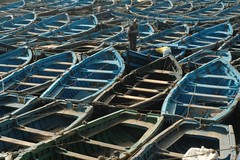
![Reblog this post [with Zemanta]](http://img.zemanta.com/reblog_e.png?x-id=367d2bfa-fd28-4a5f-b001-1f495a547f6f)
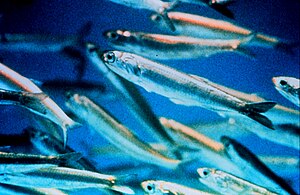
![Reblog this post [with Zemanta]](http://img.zemanta.com/reblog_e.png?x-id=cd25a855-5662-4498-ae01-67f8d6222f0b)

![Reblog this post [with Zemanta]](http://img.zemanta.com/reblog_e.png?x-id=fbffd24a-f480-4fc0-a200-8b7fad02497b)
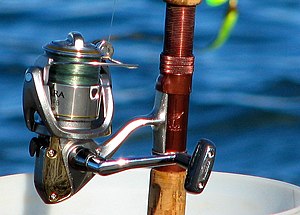
![Reblog this post [with Zemanta]](http://img.zemanta.com/reblog_e.png?x-id=a73df7d8-1e06-4369-9884-bb8c5b840a5d)
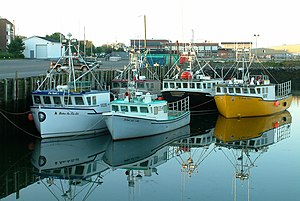
![Reblog this post [with Zemanta]](http://img.zemanta.com/reblog_e.png?x-id=e173bd1e-6841-438d-b656-361fcb09abad)

![Reblog this post [with Zemanta]](http://img.zemanta.com/reblog_e.png?x-id=6527a15d-f3aa-4fab-94fb-f2dcfb85db4a)
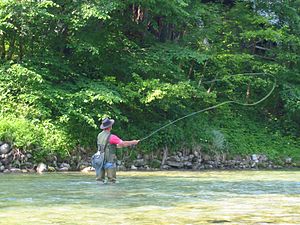
![Reblog this post [with Zemanta]](http://img.zemanta.com/reblog_e.png?x-id=bccfb17f-d53e-4580-9ff2-94c5ab89e117)

![Reblog this post [with Zemanta]](http://img.zemanta.com/reblog_e.png?x-id=d7fa35b6-28d5-4b7b-9c0d-9d3a268ec9c4)
![Reblog this post [with Zemanta]](http://img.zemanta.com/reblog_e.png?x-id=a401fab1-1646-460c-a8fb-d66c32df12fc)

![Reblog this post [with Zemanta]](http://img.zemanta.com/reblog_e.png?x-id=08a7349e-140a-49cc-abee-052d63d6a697)

![Reblog this post [with Zemanta]](http://img.zemanta.com/reblog_e.png?x-id=b594730f-37fa-40a8-9c2c-4c3b86e8ac50)

![Reblog this post [with Zemanta]](http://img.zemanta.com/reblog_e.png?x-id=9a4a1ea4-9835-4a23-abc1-b55b3626405b)

